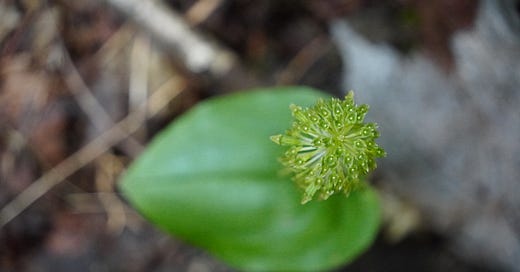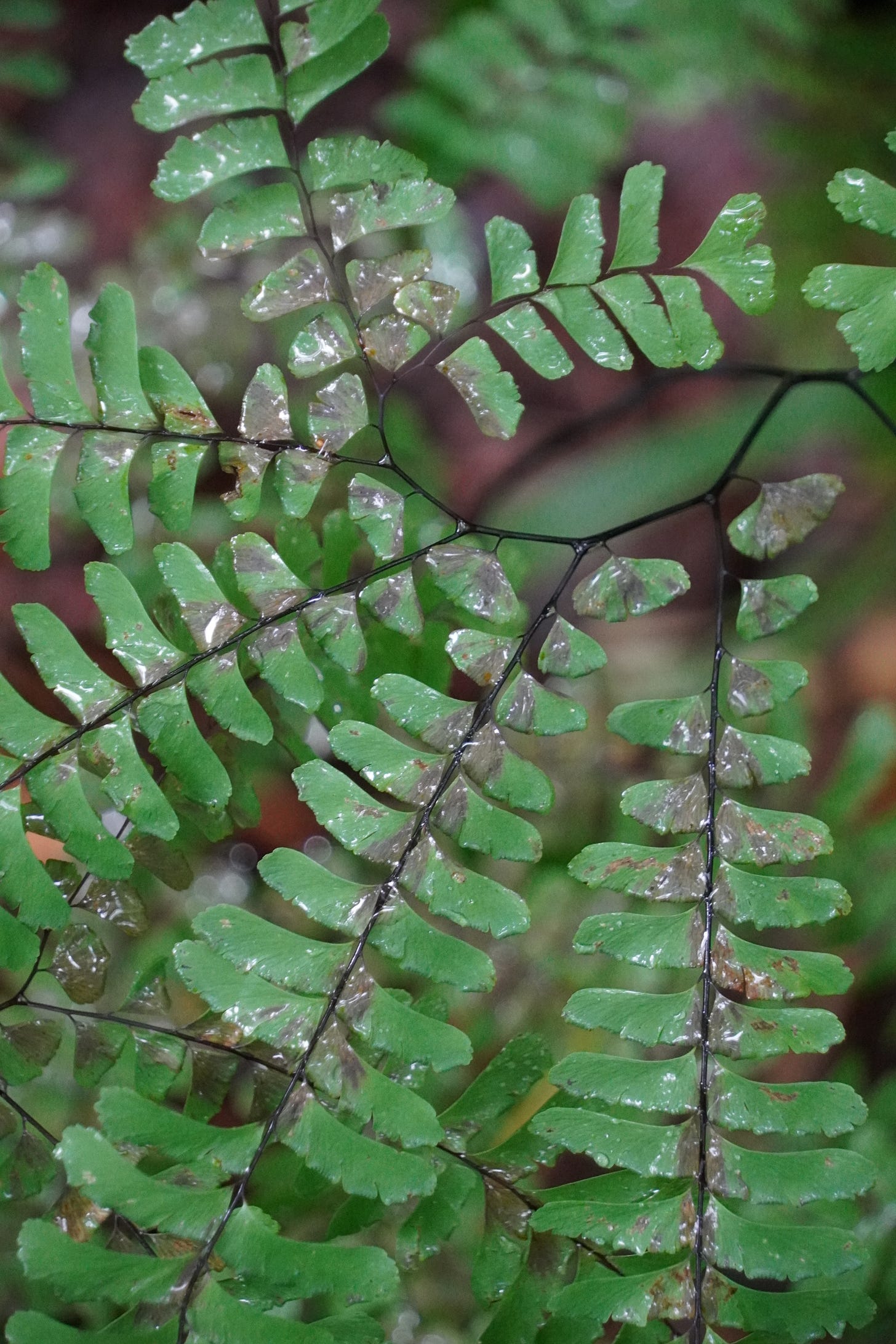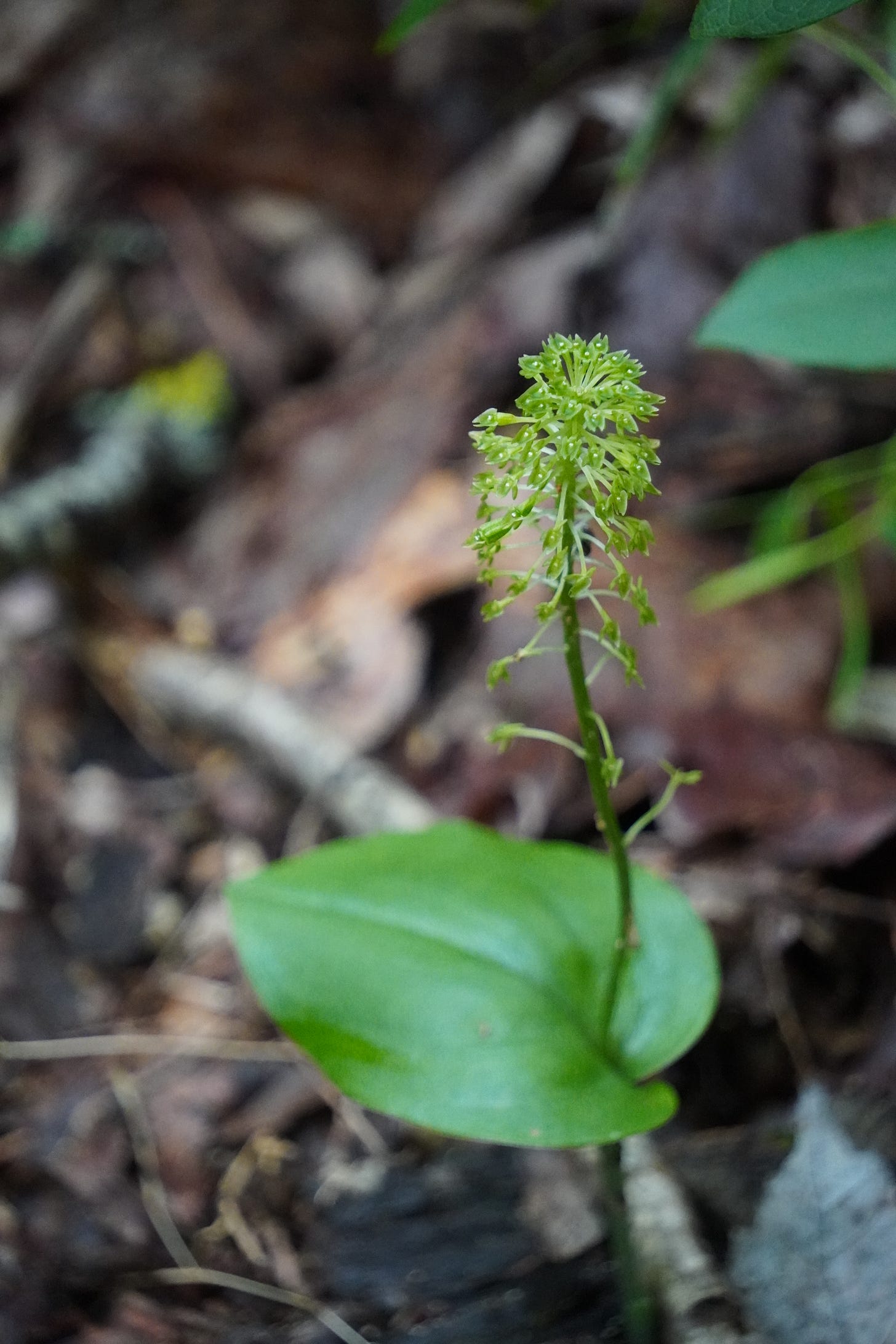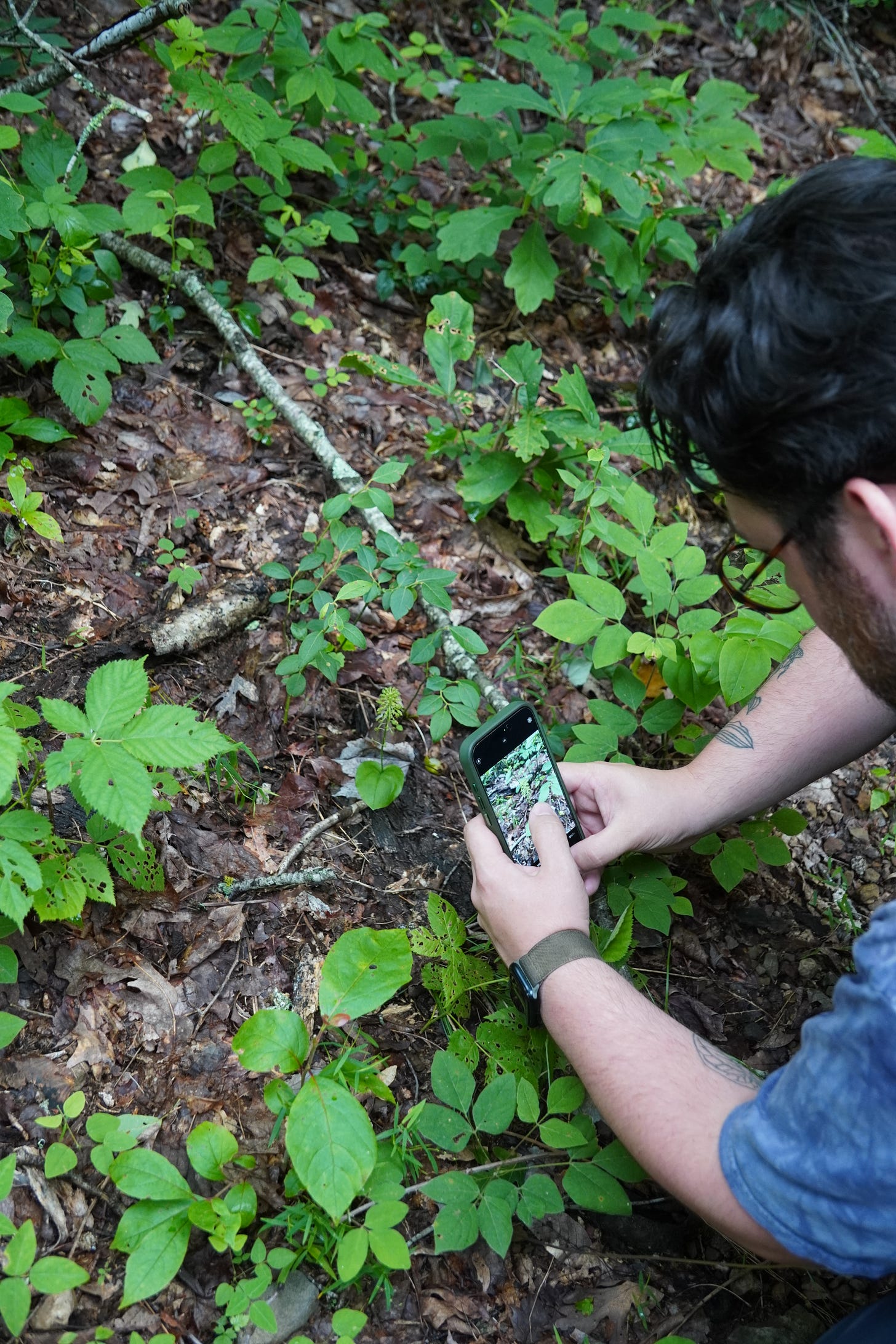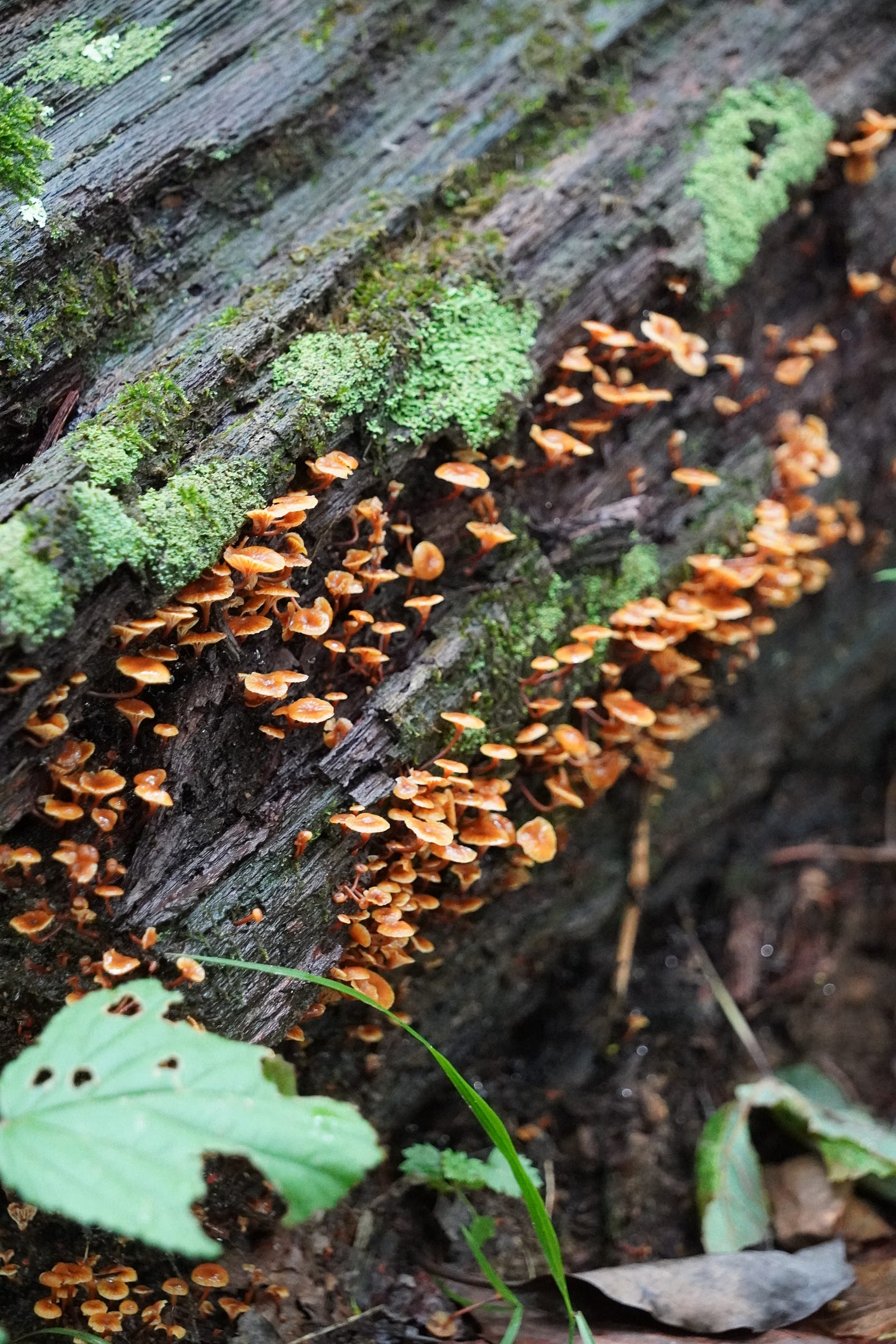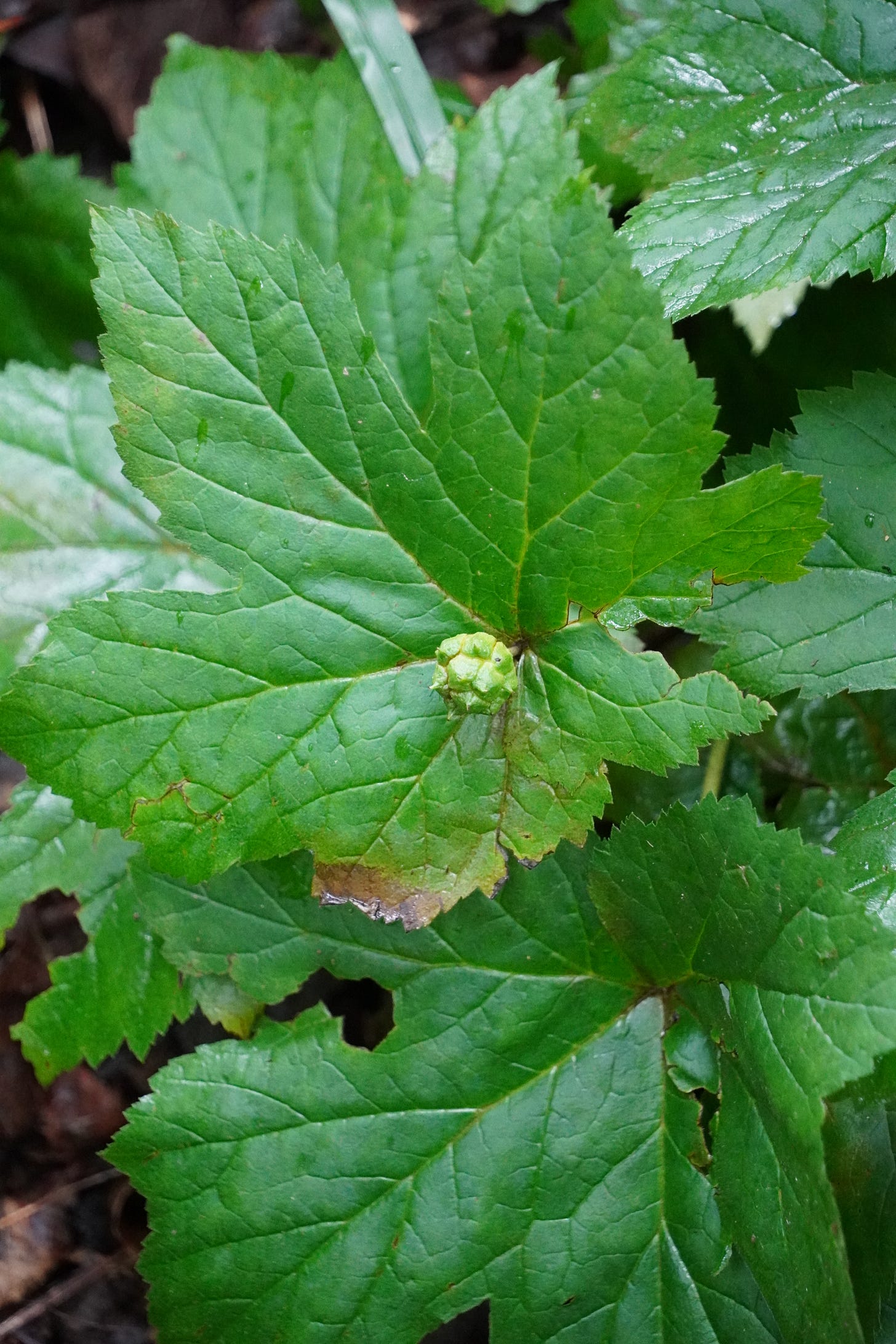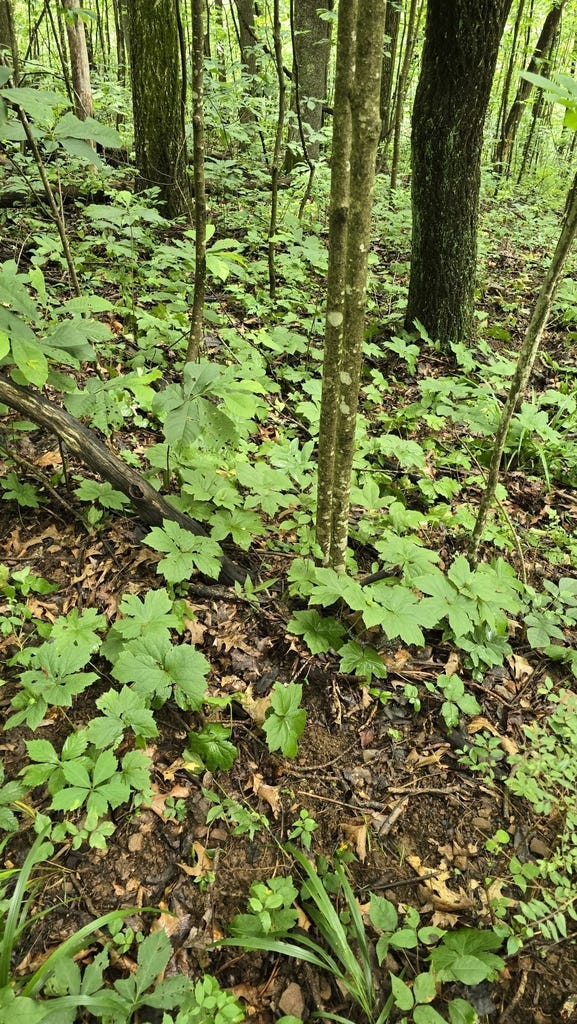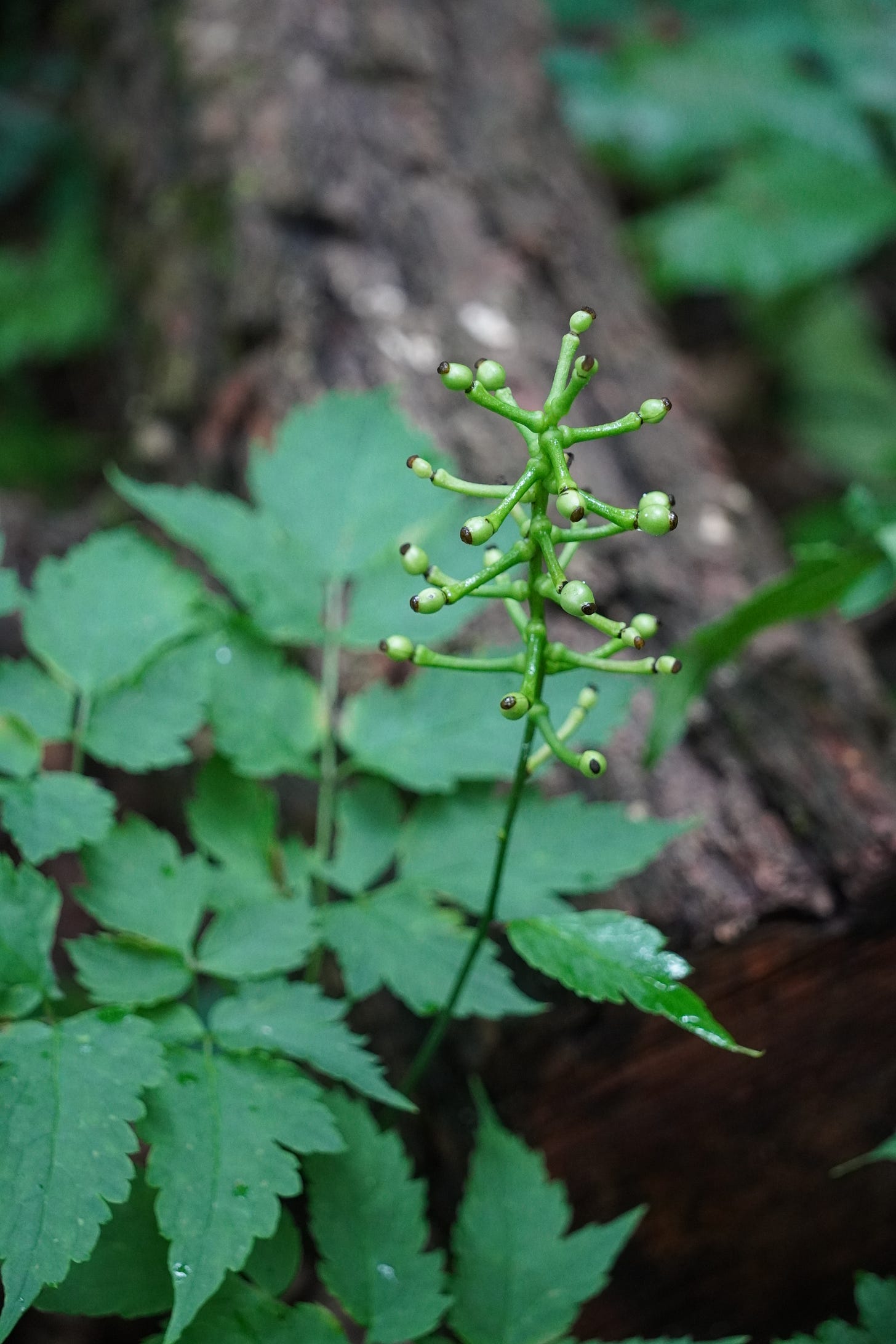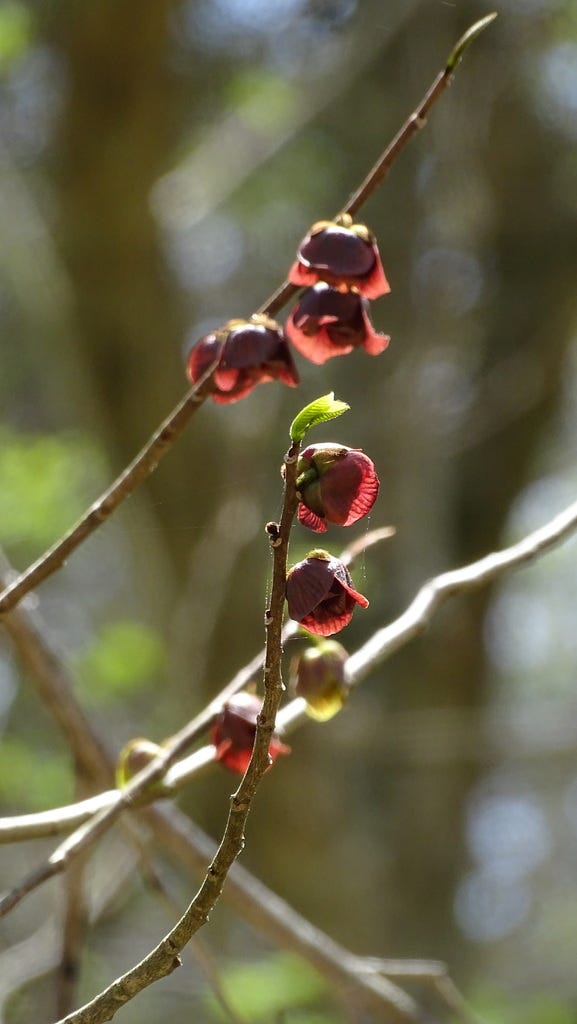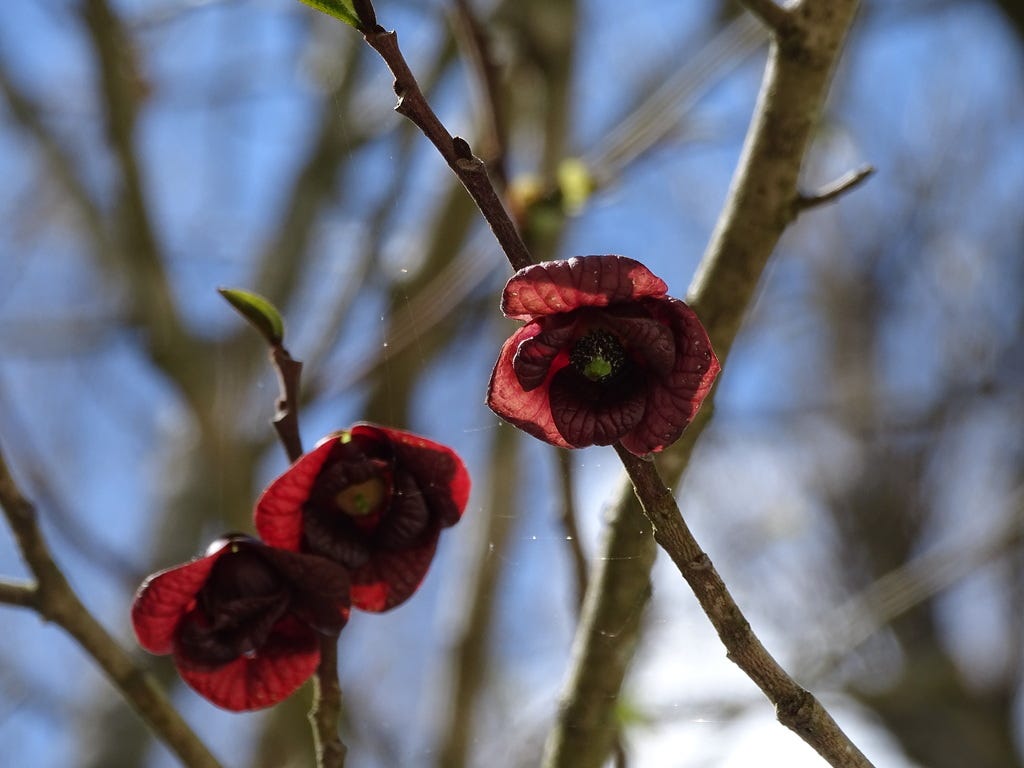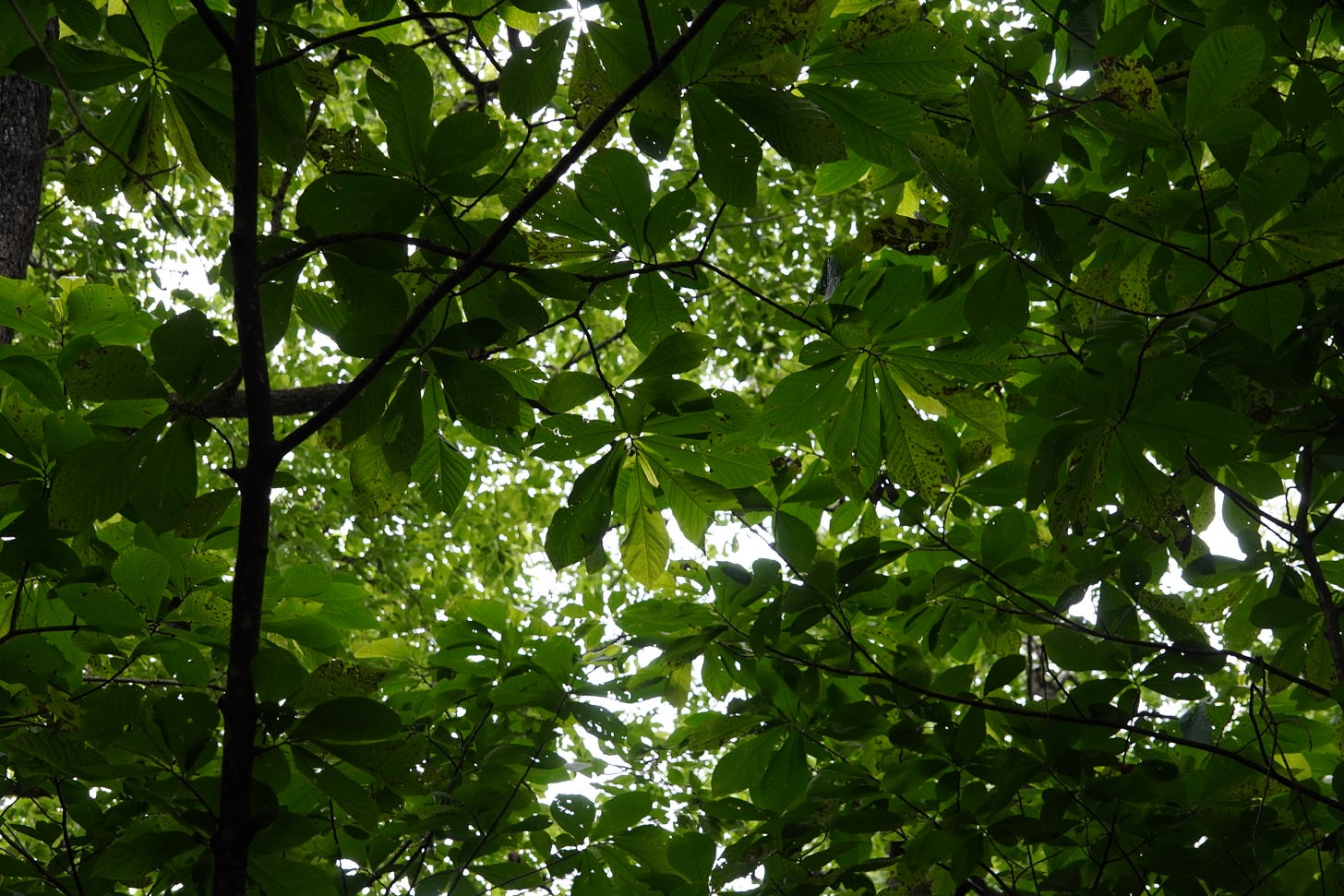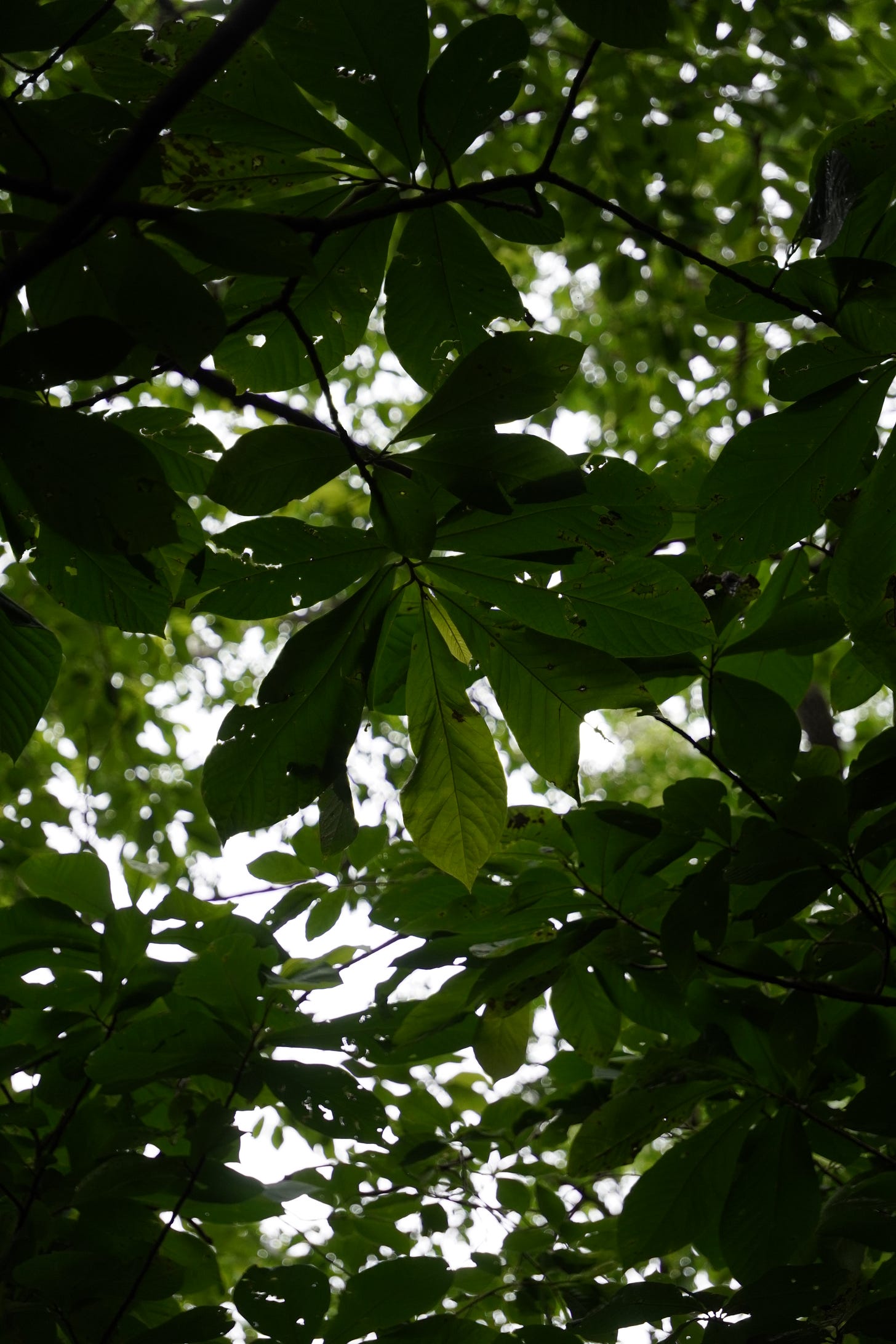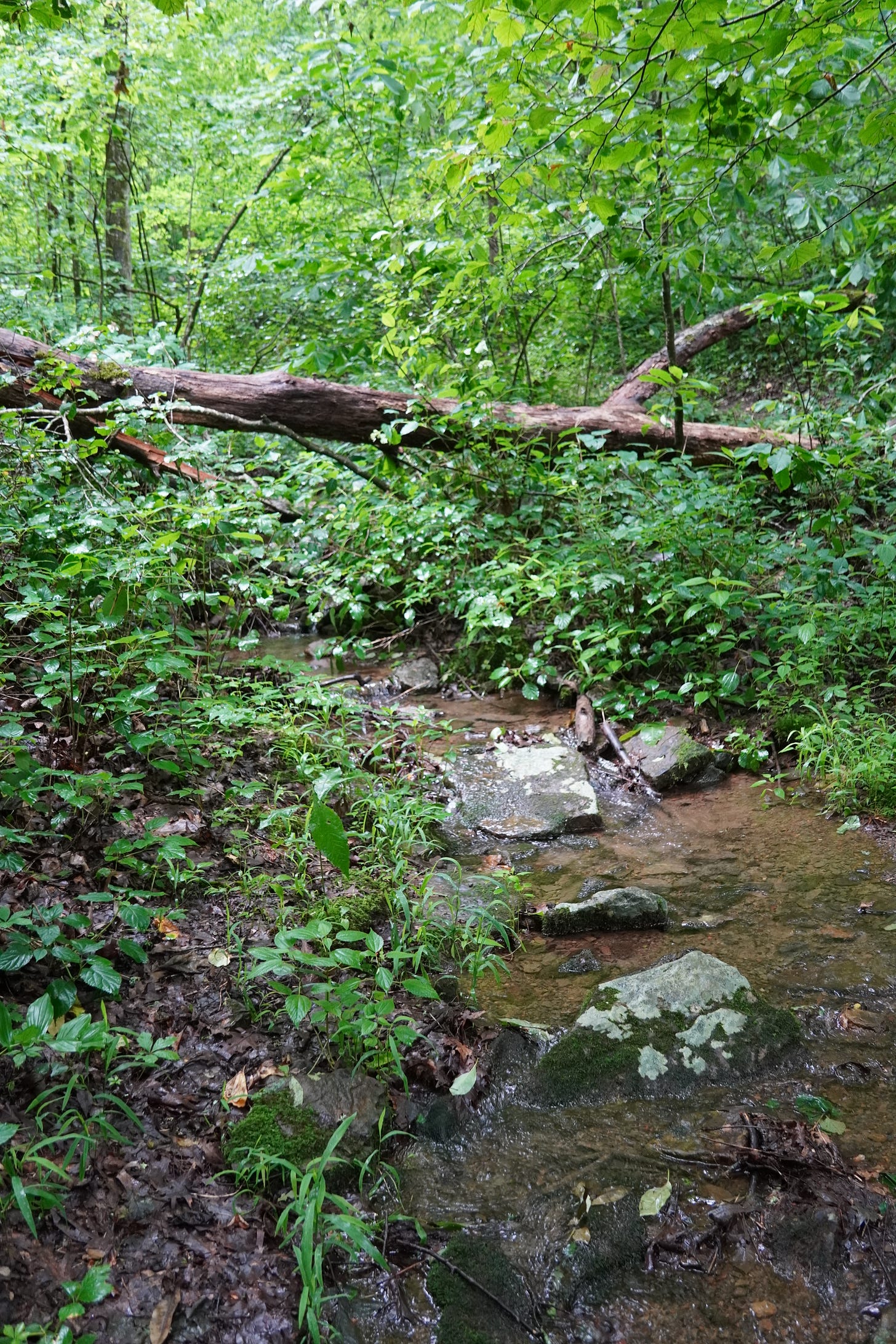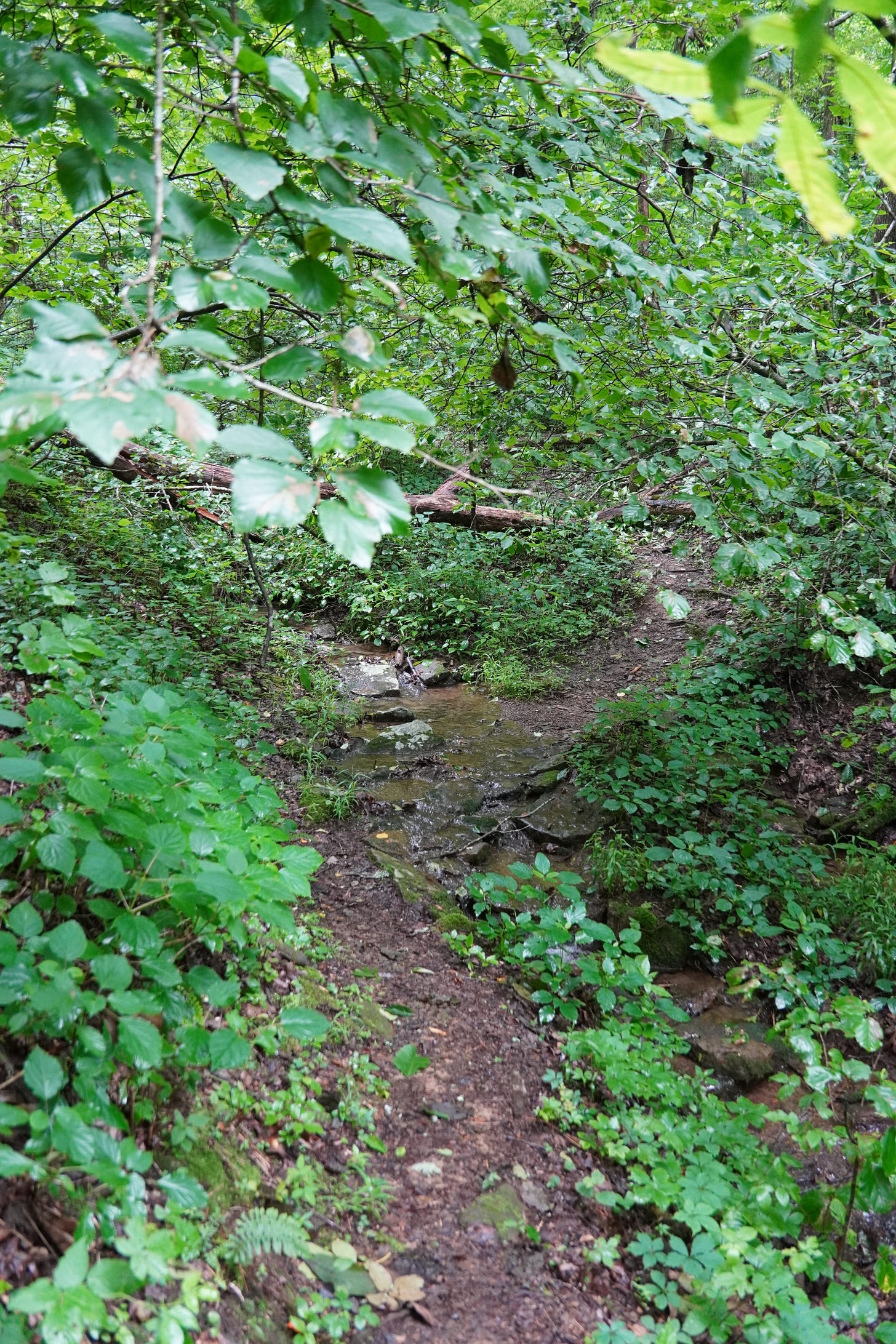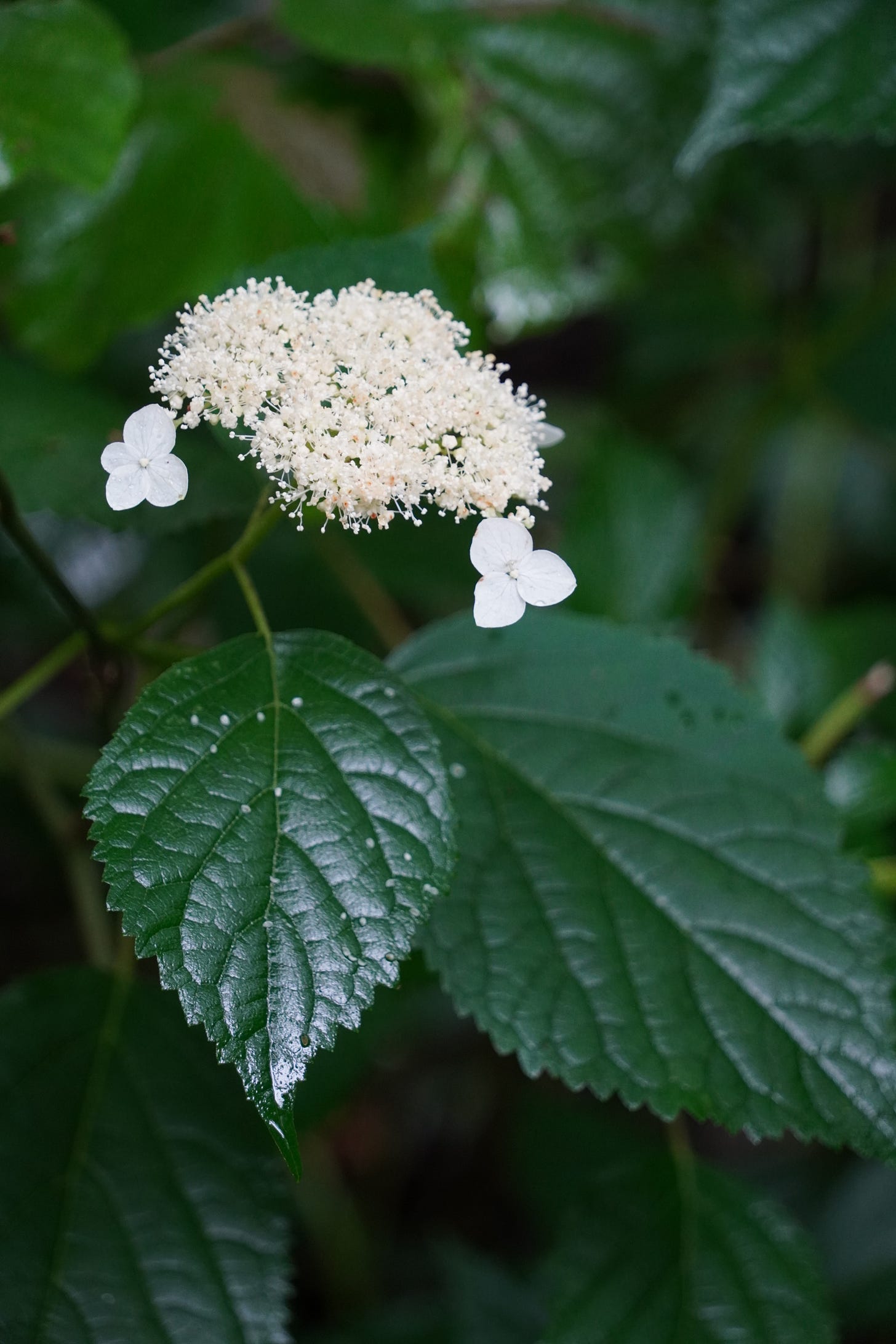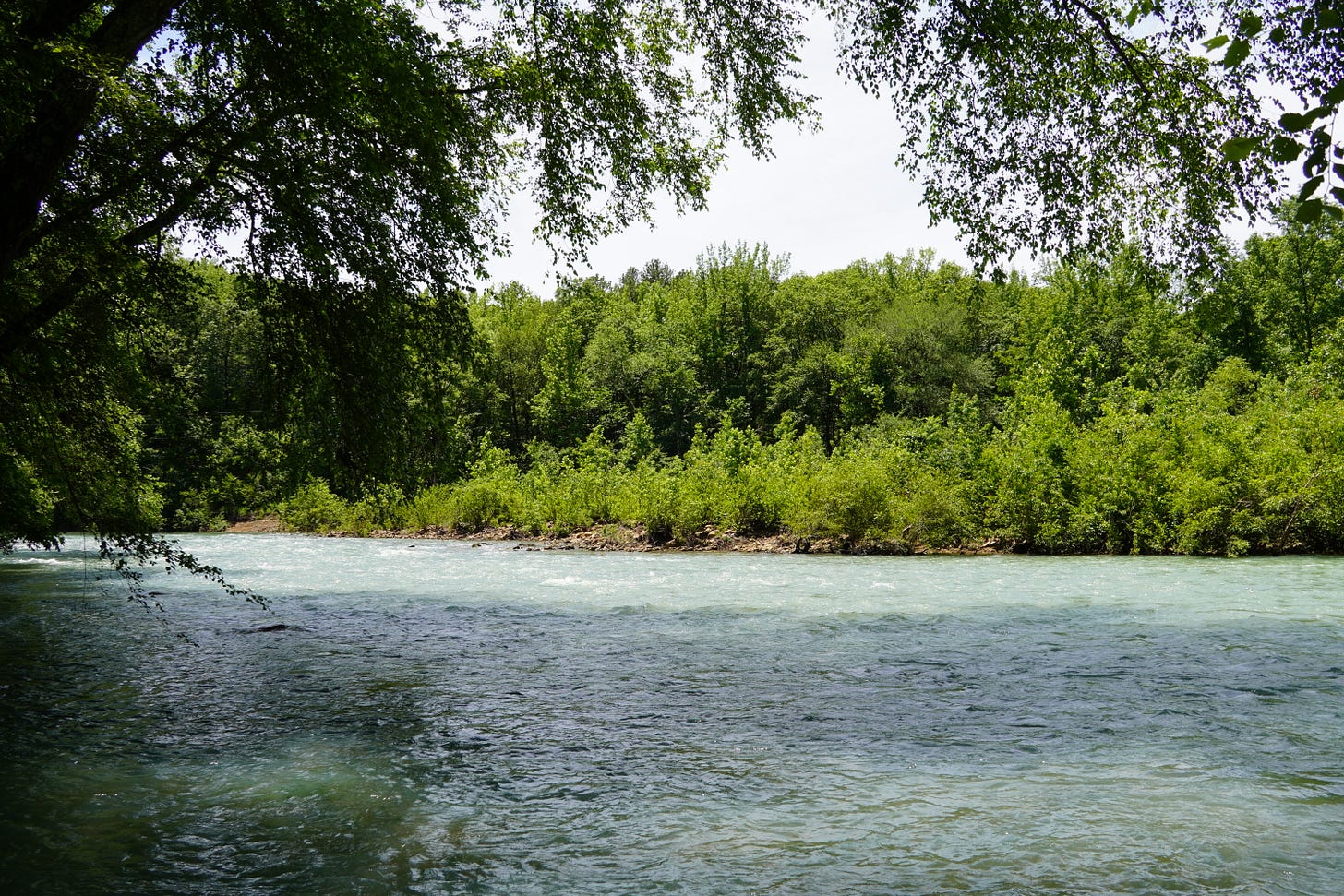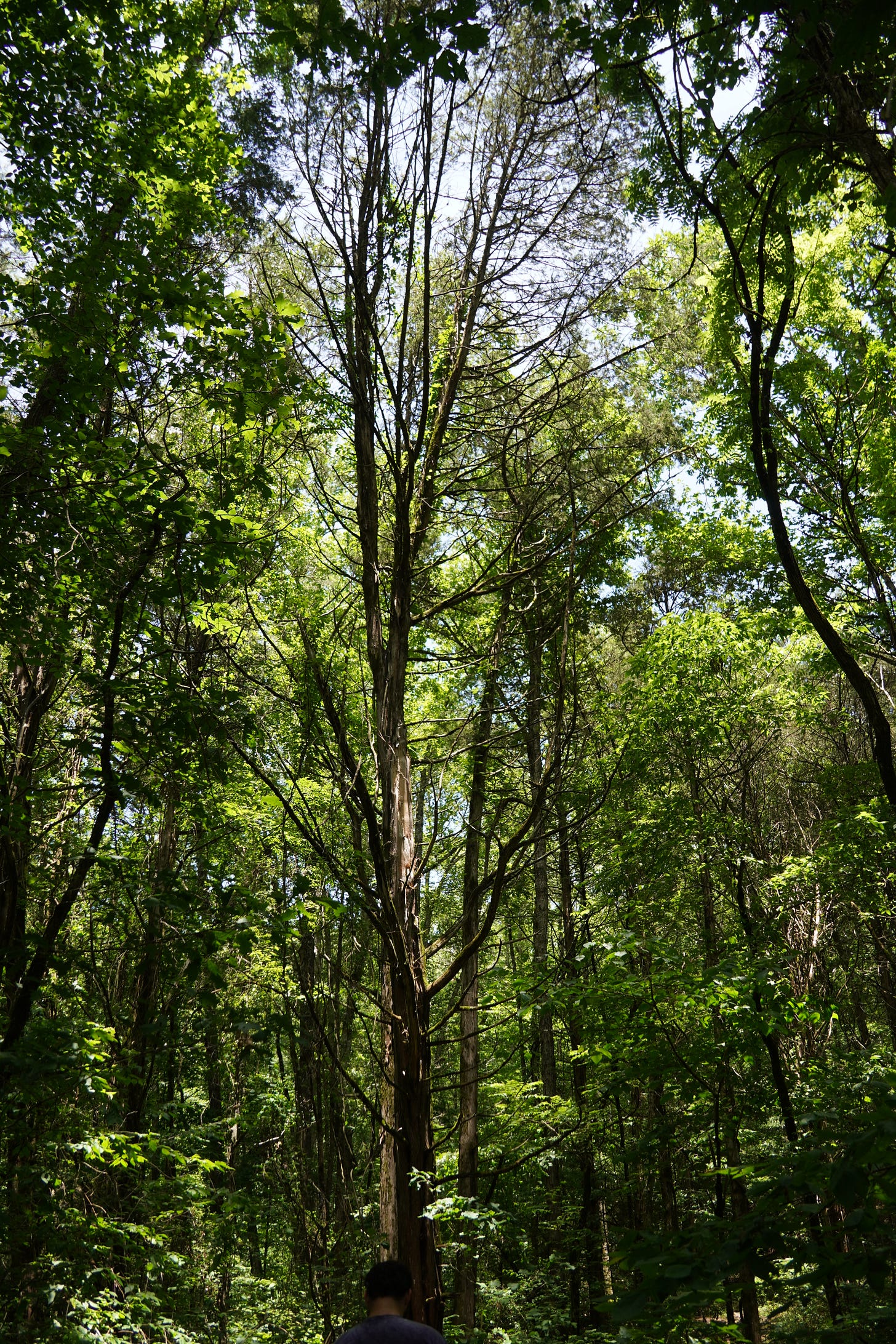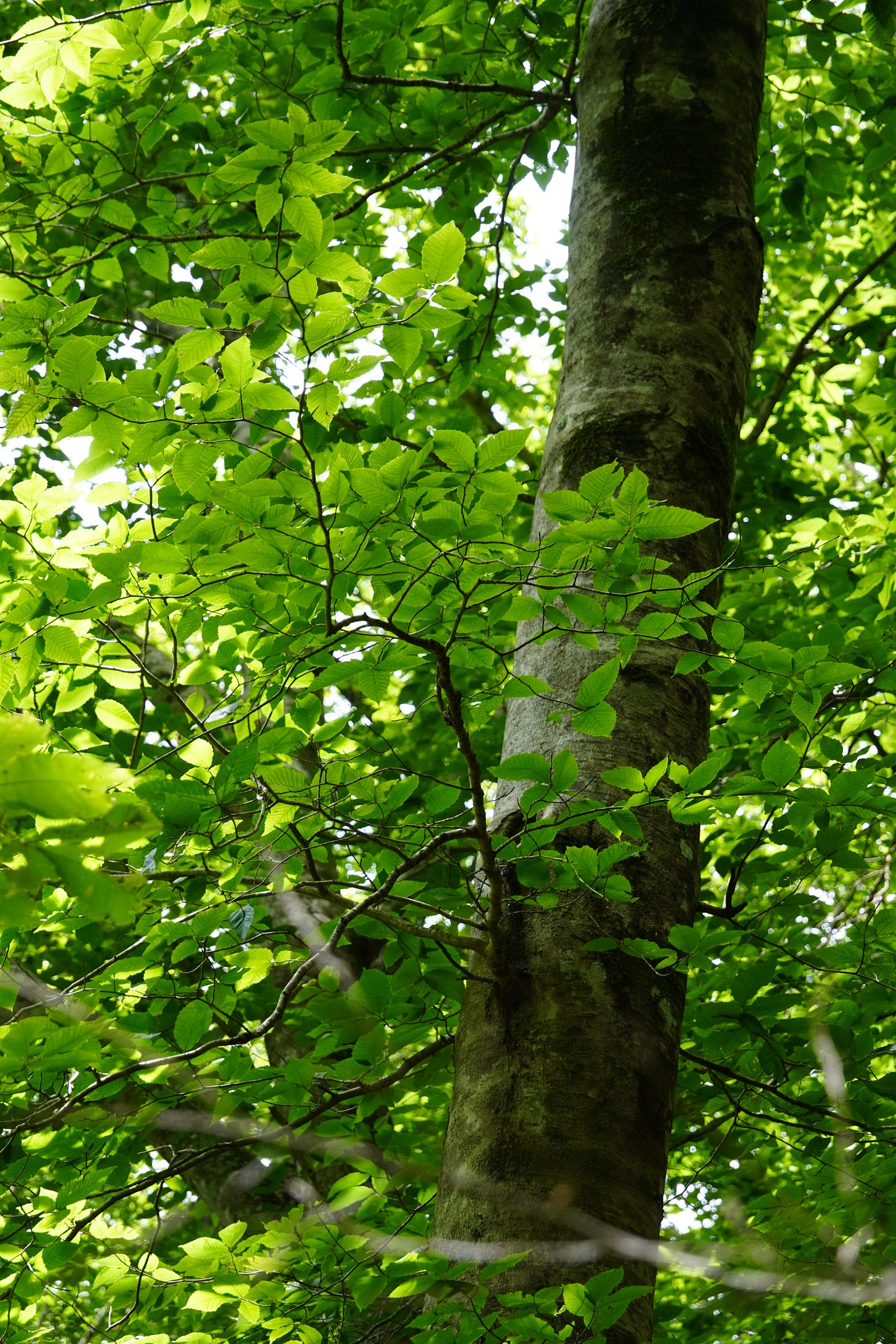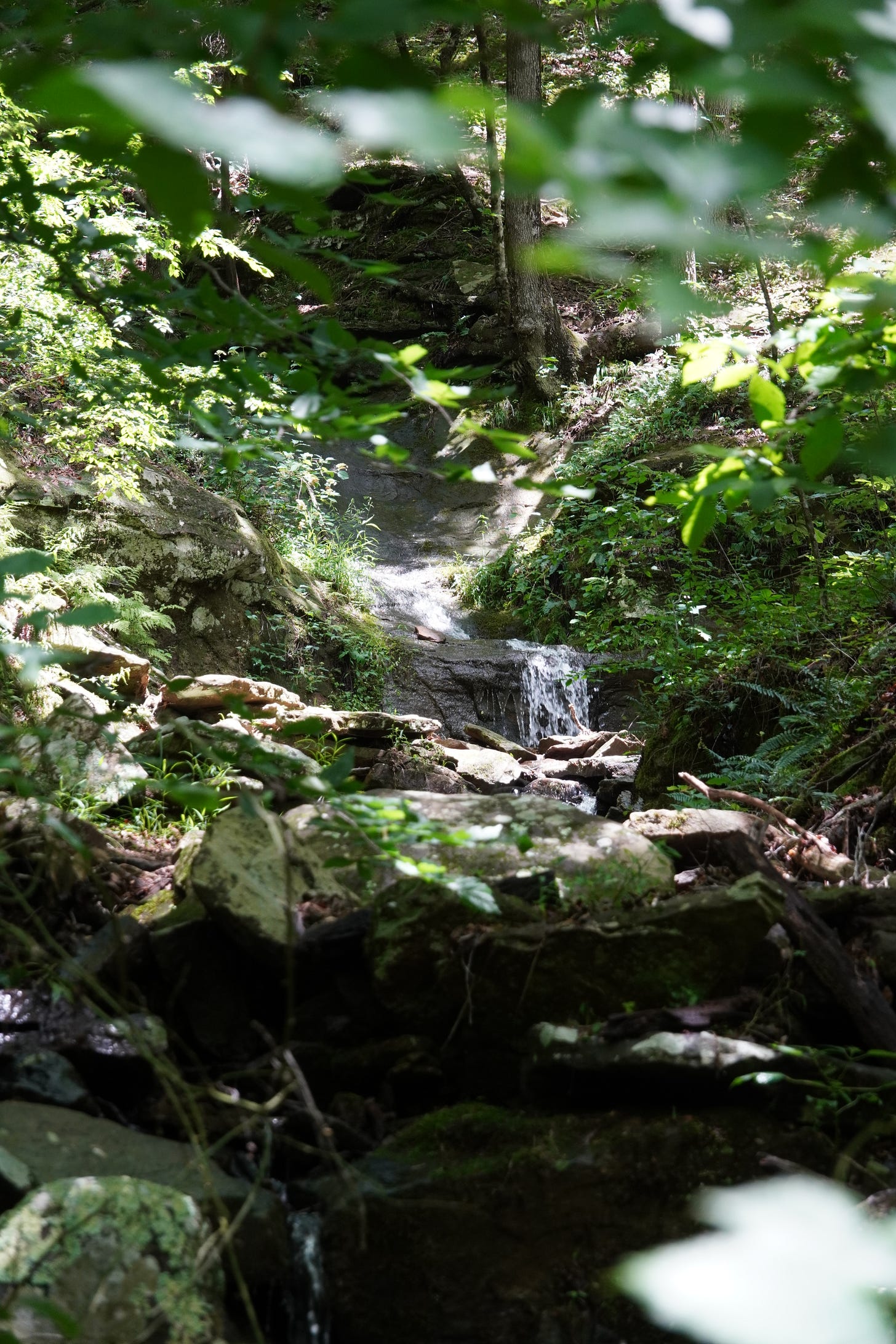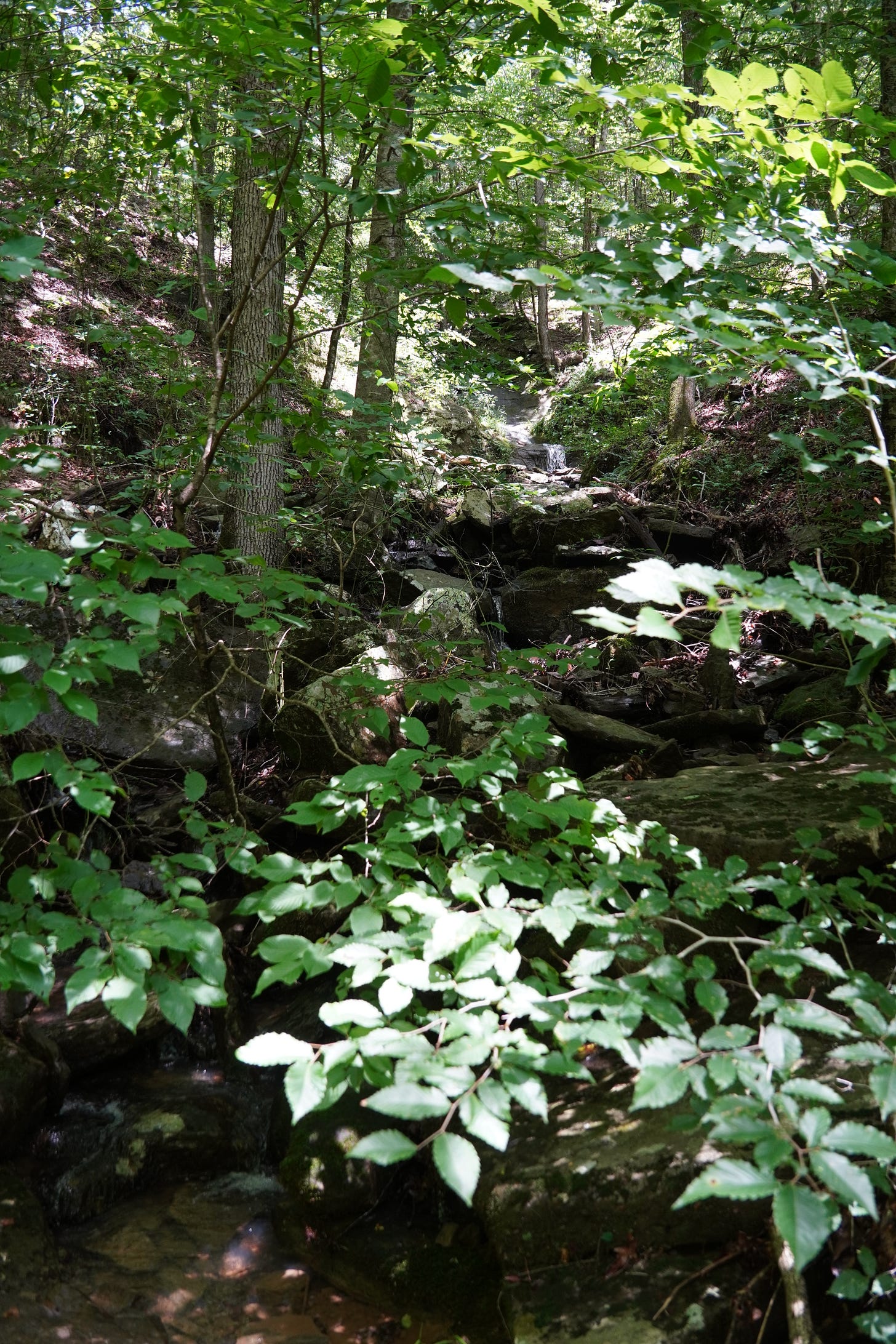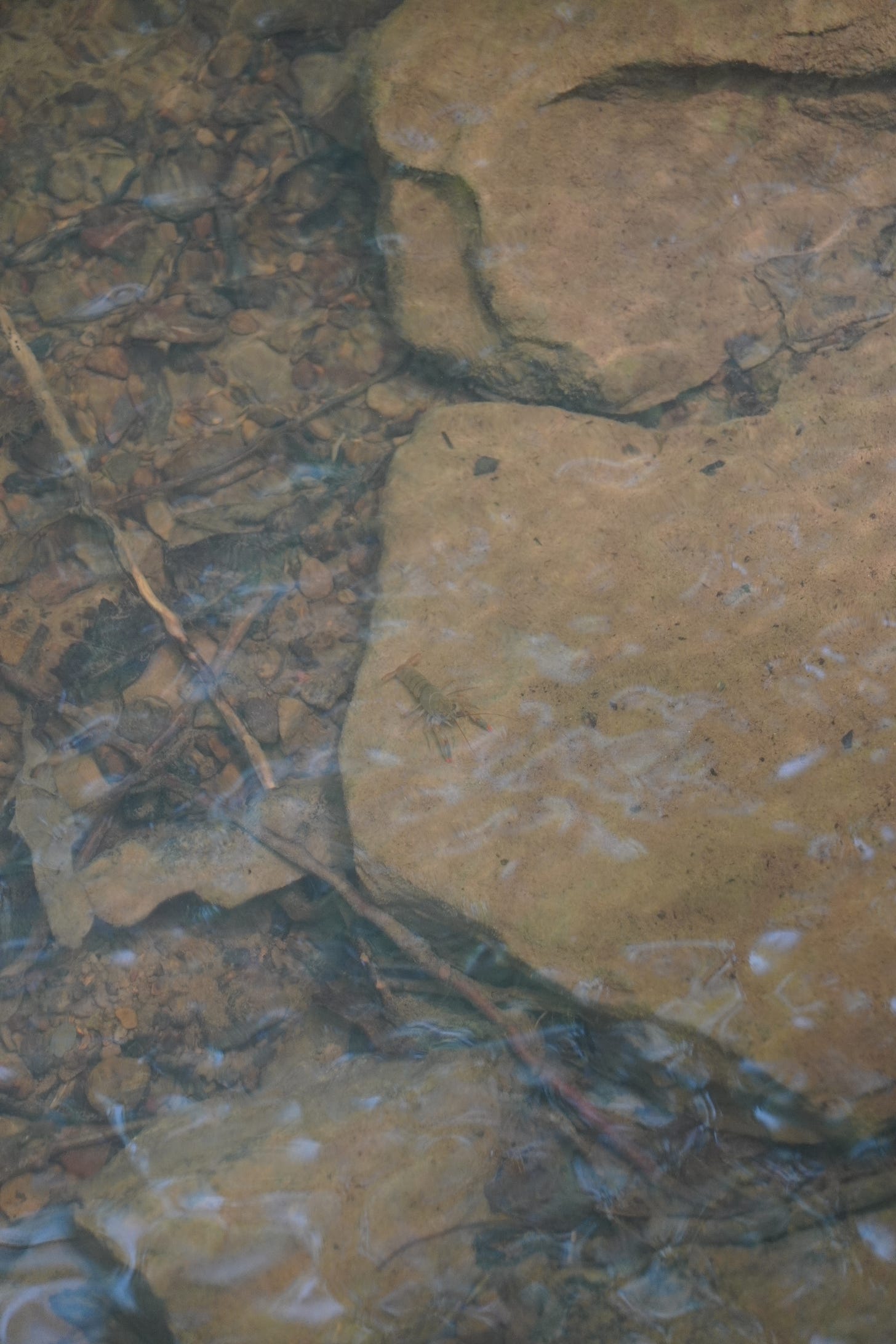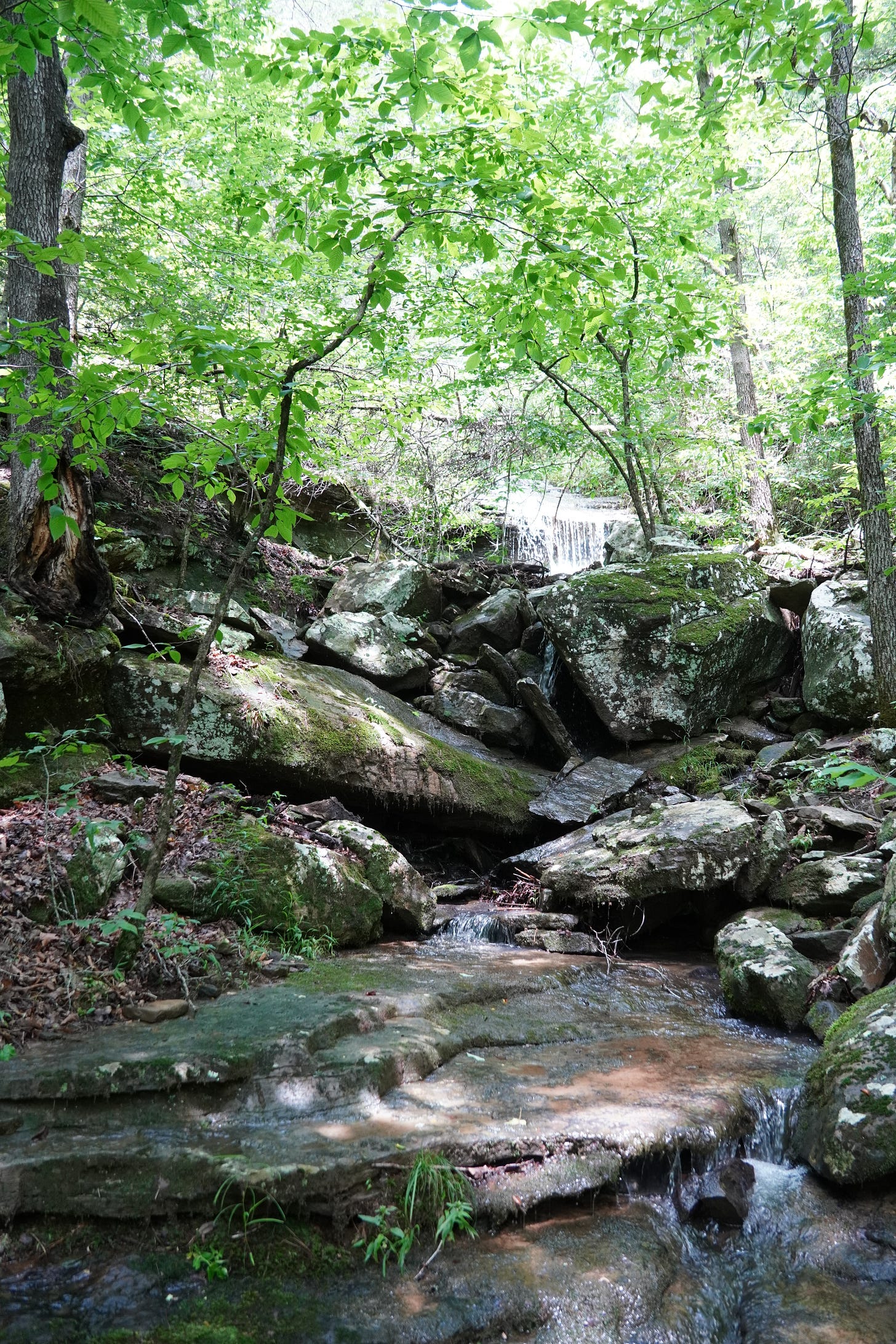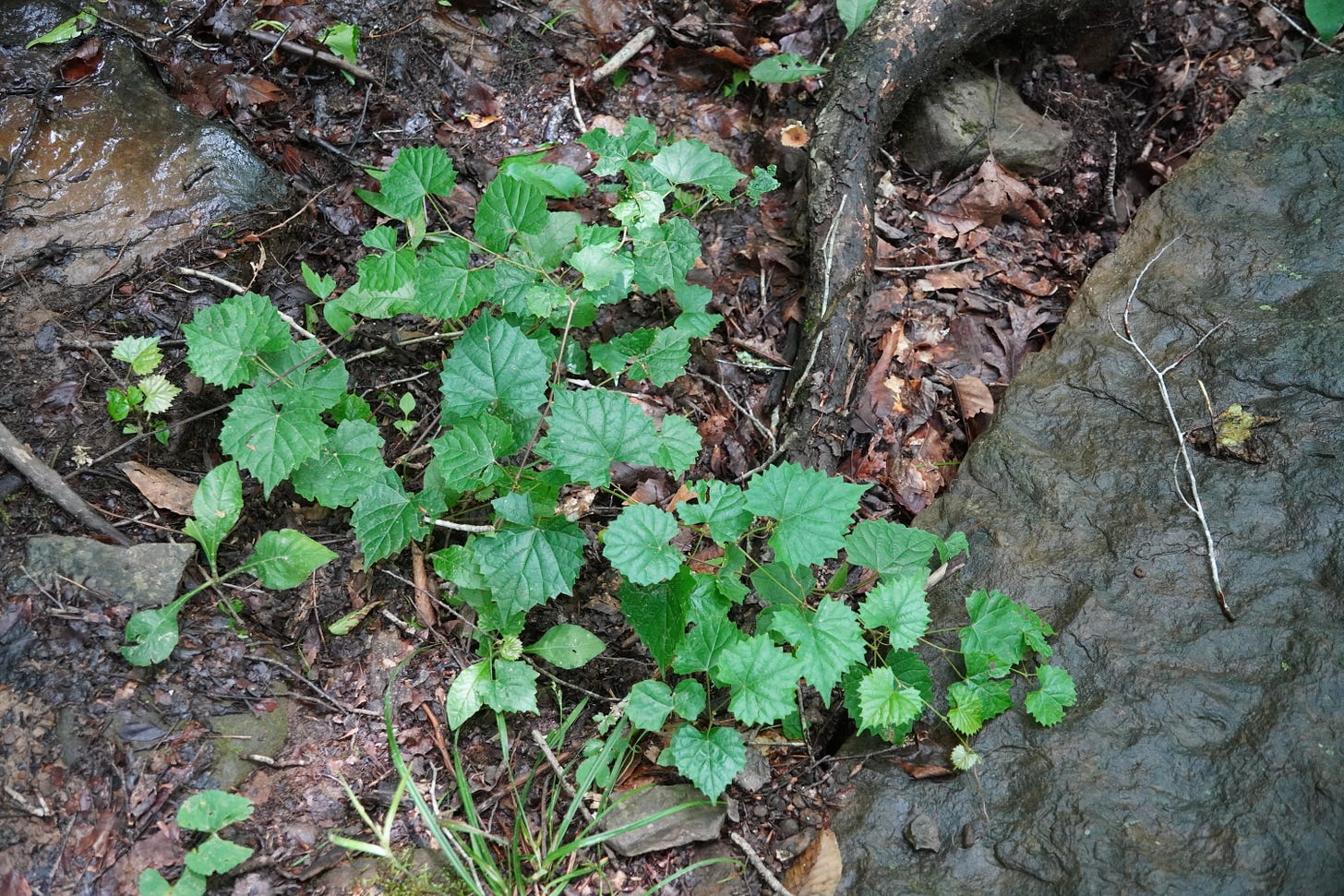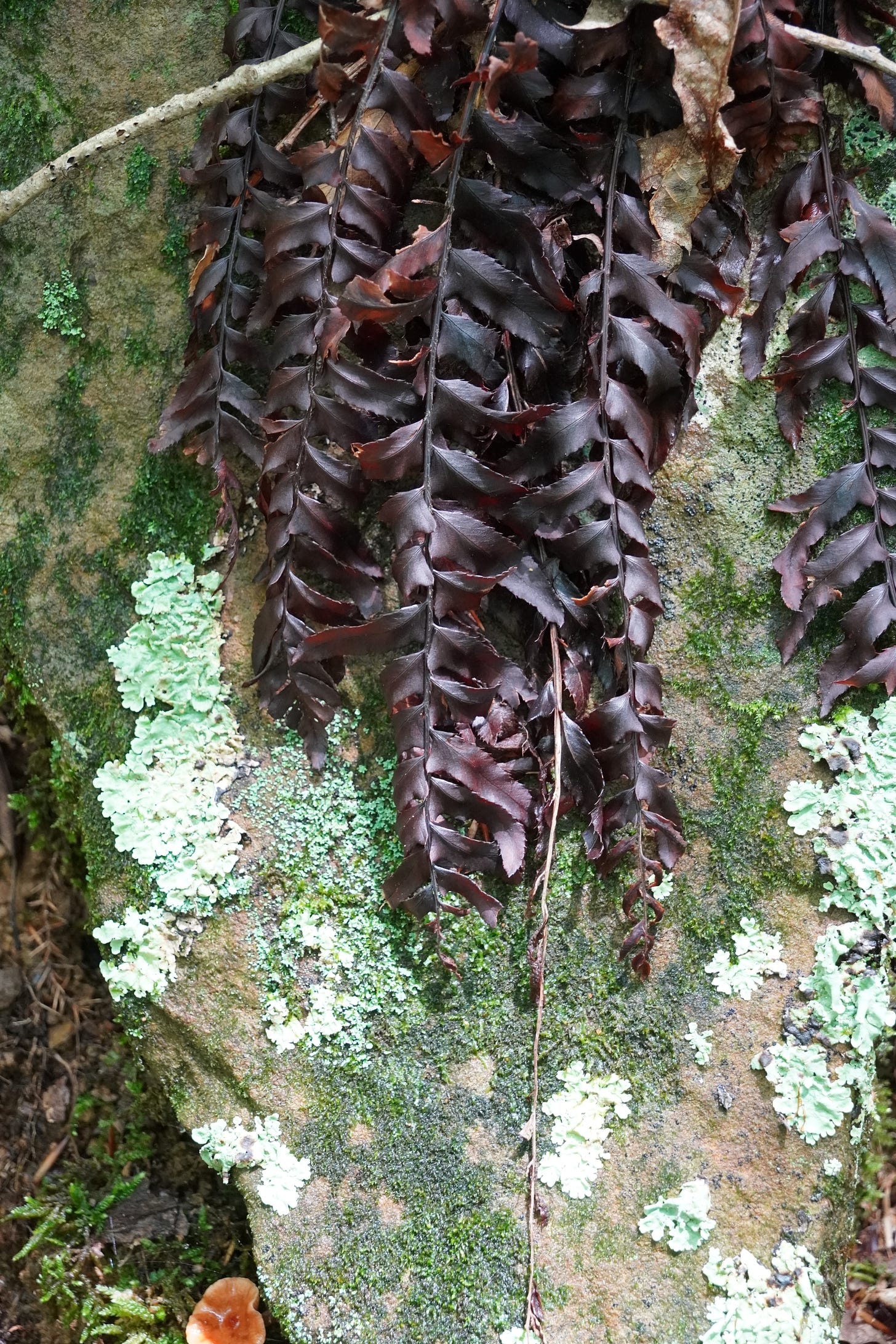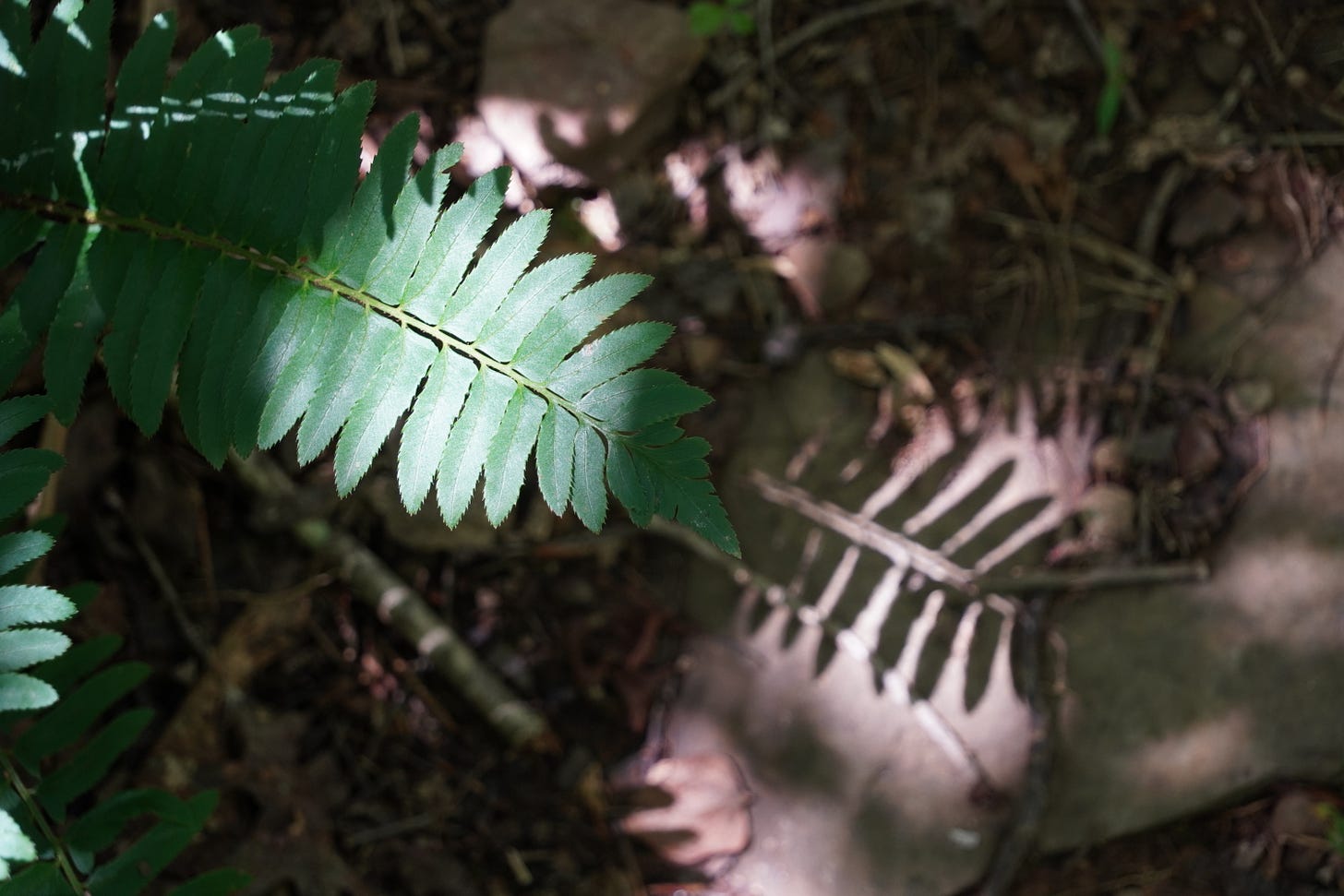Ozark National Forest Orchids, The Mulberry River, and More // June 2025
In lieu of a visit to the herbarium, I went out with another volunteer to a couple of tracts in the National Forest not too far north of the Mulberry. Our target was seeing massive pawpaw groves, but we ended up seeing far more than just that!
Among all of the various greens of the forest floor, Morgan spotted a tiny orchid, which neither of us recognized.
A tiny jumping spider sat nestled between the individual flowers. Once we eventually got somewhere with service, we figured out that it was Green Adder's-Mouth (Malaxis unifolia).
Although they lacked flowers, there were also some vegetative specimens of Tway-blade Orchid (Liparis liliifolia) a bit further down the path.
Large colonies of Goldenseal (Hydrastis canadensis) sprawled in several sections of the pawpaw groves in an abundance I’ve never seen before. It is currently in fruit. There are only a handful of trails I can think of, all in the Buffalo River Region, where a couple of plants can be seen here and there. To see about a hundred of them in a single day was wild. Much like ginseng, which grows in similar habitats, it is a medicinal plant that is likely artificially scarce due to over-collection.
Another unexpected find greeted us in the form of Doll’s Eyes (Actaea pachypoda). Once their fruit ripen, those green outers will turn a bright white, leaving the berries looking just like tiny eyeballs!
There were quite a few vegetative specimens around, and every time I looked down at them I kept thinking it was an odd location and height for Actaea racemosa— it was a pleasant surprise to discover it was its rare sibling instead! I’ve never seen these.
The pawpaw groves are truly beautiful. In early spring, they send out thousands of rose-like flowers that dangle off of their branches.
When in bud, they have little brown and hairy brush-like tips with coconut-like flower buds below.
Leaves come out a few months after that, and at present— several months later— the first pawpaw fruits are beginning to form.
As previously mentioned, these groves are the largest I’ve ever seen. The average pawpaw back home near Hobbs State Park is probably only 12 to 15 feet tall at maximum, but the ones out here have to be at least 25ft. Their trunks are far thicker, although certainly still slim compared to an oak or something slow-growing like that. If you saw them in winter, you might be inclined to think they were extra tall Serviceberries, or something like that.
Beyond the height of the trees, the amount of coverage that these groves span is also quite impressive. I hope that they’ll continue to fill back in; after last year’s tornadoes, quite a few trees were bent and broken.
Oddly, below the pawpaws I spotted several Ozark Chinquapins, a tree that usually prefers very dry soils. They seemed reasonably healthy. Pawpaws, of course, prefer the low areas— hollows and creeks— in already mesic forests. Most of the other trees around were Bitternut Hickory (Carya cordiformis), White Oak (Quercus alba), and other lovers of moist soils and shade. The area is also full of Spicebush (Lindera benzoin), which shares those same preferences. Spring ephemerals are a common sight along the ground, and I can’t say I was surprised to see that Goldenseal earlier. With so many species around that are dependent on wet soils, it was surprising to see those Chinquapins at all, much less more than once.
Of course, there were other plants interspersed between that were maybe a little bit out of their element too, including large numbers of older Sassafras trees, and some Black Gums (Nyssa sylvatica) as well. The latter species seems to be incredibly flexible about where it grows; you can see them en masse on pine ridges underlain by chert with barely-there soil as well as in a pawpaw grove. For a long time, Swamp Tupelo (Nyssa biflora) was considered to be a subspecies of Black Gum, although it’s been elevated to a separate species in recent years. You can guess what habitat it lives in.
We kept walking down the narrow trail until we encountered a flowing stream.
Despite walking the same route back to the car, a few new plants ‘appeared’ along the way.
After that, it was time to head south to the Mulberry River, then to a little waterfall up the highway.
The main parking area has a gorgeous stonemasonry boat launch, which you can walk down to get right on the edge of the river when it’s not in use. Large River Birch (Betula nigra) trees are the dominant tree along this edge, and a few Buttonbush (Cephalanthus occidentalis) shrubs are around as well. The gravel bar across the water appears to mostly be composed of Sycamore saplings and willow trees. When you turn around and walk back towards the highway, you are immediately met with groves of Short-leaf Pine (Pinus echinata), Black Cherry (Prunus serotina), oaks, hickories, and other typical dry-ish woodland species. The sound of Pine Warblers is constant.
On the trail to the waterfall, a few cedars indicated that one area was likely open— maybe an old field— but that it had grown up quite expeditiously, these trees scrambling upwards in an unusual habit. I don’t think I’ve ever seen a taller cedar in my life, which is a bold claim from someone who lives in the Ozarks.
There were a couple of Strawberry Bushes (Euonymus americana) around, although even this large one had been nibbled quite aggressively by the deer. This is one of my favorite species, and also one that is difficult to find despite not being exactly uncommon. Deer seem to strongly prefer it as browse, so most of the time when you encounter it, you’re seeing stems that are only a foot or so high, constantly mowed by those pesky animals.
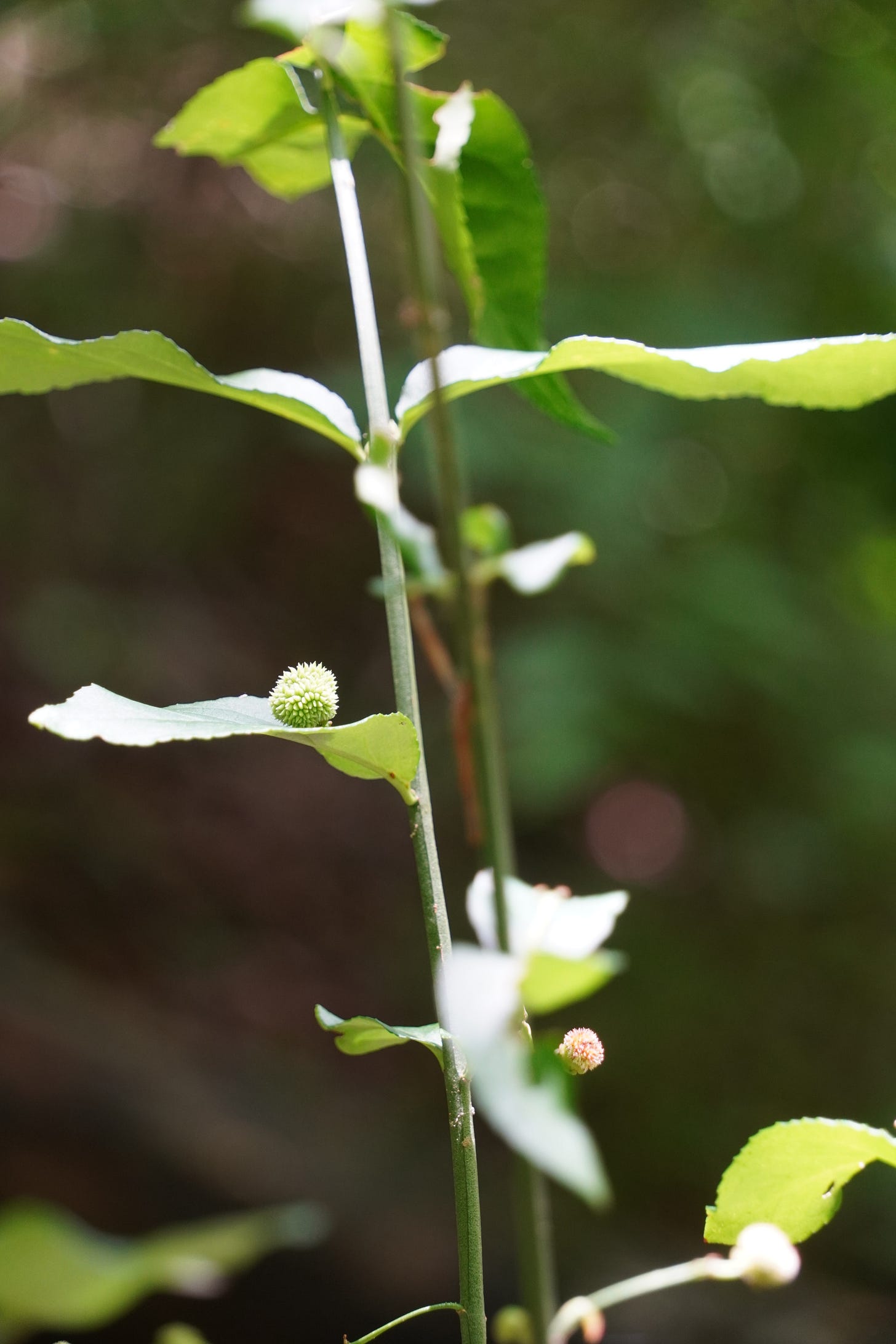
What’s most interesting to me about this area is how suddenly the species composition shifts in terms of the trees. Just a little further up the hill, you will not find a single American Beech (Fagus grandifolia) tree around, but down here there are several specimens with large diameters.
A couple of macroinvertebrates inhabited the stream, as well as a cute little crawdad.
And of course, finally being far enough south, there were a few muscadine vines around. Makes you feel right at home.

Beyond the presence of beech trees, I also found it interesting that the area surrounding the waterfalls was also not overgrown with plant species that required constantly moist soils, unlike the area we had been in earlier. It makes you wonder if the waterfalls are more ephemeral in their flow and the water is prone to sitting on the surface, whereas that mesic forest is in an area with a spring and underground channels, or something of that sort.
The Ozark National Forest, just one of the national forests in our state, includes over a million acres of woodlands and other wild lands…. you never know what you’ll see out there. I’m really grateful that we have these examples that are so close to Fayetteville, and that are protected from modern development.

